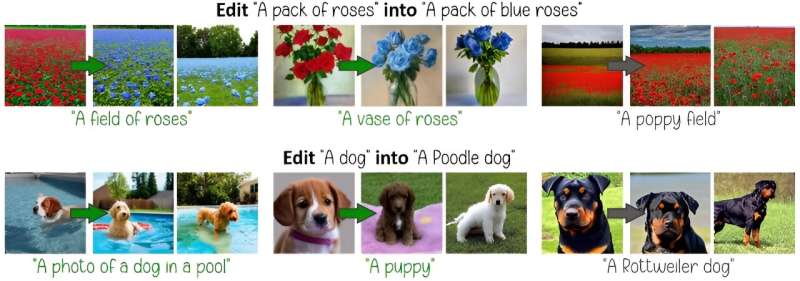
Image generator models—systems that produce new images based on textual descriptions—have become a common and well-known phenomenon in the past year. Their continuous improvement, largely relying on developments in the field of artificial intelligence, makes them an important resource in various fields.
To achieve good results, these models are trained on vast amounts of image-text pairs—for example, matching the text "picture of a dog" to a picture of a dog, repeated millions of times. Through this training, the model learns to generate original images of dogs.
However, as noted by Hadas Orgad, a doctoral student from the Henry and Marilyn Taub Faculty of Computer Science, and Bahjat Kawar a graduate of the same Faculty, "since these models are trained on a lot of data from the real world, they acquire and internalize assumptions about the world during the training process.
"Some of these assumptions are useful, for example, 'the sky is blue,' and they allow us to obtain beautiful images even with short and simple descriptions. On the other hand, the model also encodes incorrect or irrelevant assumptions about the world, as well as societal biases. For example, if we ask Stable Diffusion (a very popular image generator) for a picture of a CEO, we will only get pictures of women in 4% of cases."
Another problem these models face is the significant number of changes occurring in the world around us. The models cannot adapt to the changes after the training process.
As Dana Arad, also a doctoral student at the Taub Faculty of Computer Science, explains, "during their training process, models also learn a lot of factual knowledge about the world. For example, models learn the identities of heads of state, presidents, and even actors who portrayed popular characters in TV series.
"Such models are no longer updated after their training process, so if we ask a model today to generate a picture of the President of the United States, we might still reasonably receive a picture of Donald Trump, who of course has not been the president in recent years. We wanted to develop an efficient way to update the information without relying on expensive actions."
The "traditional" solution to these problems is constant data correction by the user, retraining, or fine-tuning. However, these fixes incur high costs financially, in terms of workload, in terms of result quality, and in environmental aspects (due to the longer operation of computer servers). Additionally, implementing these methods does not guarantee control over unwanted assumptions or new assumptions that may arise. "Therefore," they explain, "we would like a precise method to control the assumptions that the model encodes."
The methods developed by the doctoral students under the guidance of Dr. Yonatan Belinkov address this need. The first method, developed by Orgad and Kawar and called TIME (Text-to-Image Model Editing), allows for the quick and efficient correction of biases and assumptions.
The reason for this is that the correction does not require fine-tuning, retraining, or changing the language model and altering the text interpretation tools, but only a partial re-editing of around 1.95% of the model's parameters. Moreover, the same editing process is performed in less than a second.
Citation: Correcting biases in image generator models (2024, June 24) retrieved 24 June 2024 from https://techxplore.com/news/2024-06-biases-image-generator.html
This document is subject to copyright. Apart from any fair dealing for the purpose of private study or research, no part may be reproduced without the written permission. The content is provided for information purposes only.
